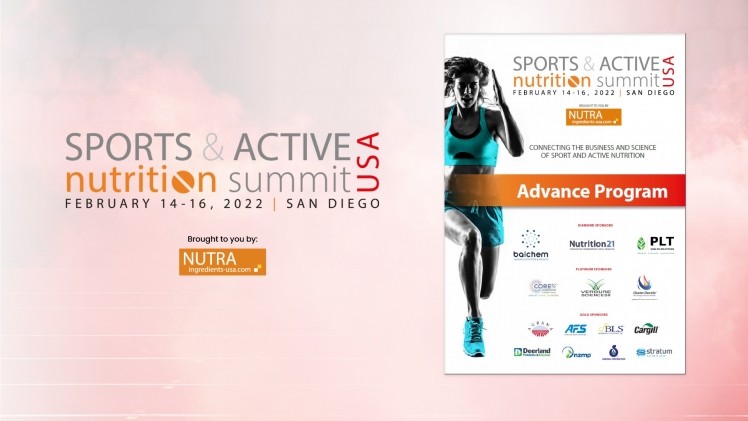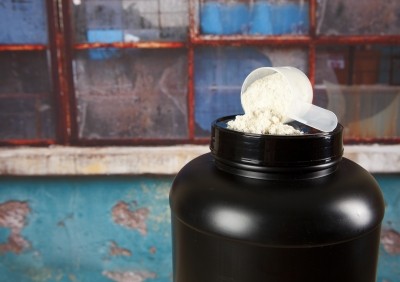Protein ingredient innovation evolving to match developing scientific understanding, expert says

Dr Robert Wildman, PhD, CEO of the new brand TYM Performance, has sourced protein ingredients and spoken on the development of the category for decades. He will be lending his expertise as a panelist at NutraIngredients-USA’s Sports & Active Nutrition Summit 2022, which is scheduled for Feb. 14-16 in San Diego. The summit is being put on in cooperation with the American Herbal Products Association’s Sports Nutrition Committee, of which Wildman is the chairman.
Dr Wildman has seen the understanding of protein needs and the evolution of consumer attitudes about the products from the ground up. Dr Wildman served as chief science officer for Post Holdings’ active nutrition brands, including Dymatize and Power Bar, for about a decade. He has served as chairman of the AHPA committee for about the same amount of time.
Athletes need more
He said the scientific thinking on protein has achieved some modicum of consensus when it comes to supporting the needs of athletes and active nutrition consumers.
“I’d make the point that the thinking hasn’t changed,” he told NutraIngredients-USA. “The understanding remans that athletes need more protein — at least double the RDA.”
The RDA (Recommended Daily Allowance) of protein, a value fixed by the Food and Nutrition Board of the Institute of Medicine, stands at 0.8 grams of protein per kilogram of body weight. At that level, a consumer weighing 80 kilos (176 lbs) would need 64 grams of protein a day. Dr Wildman said if that same person were a trained athlete seeking to build and main muscle they’d need something like 130 grams or more.
Dr Wildman said one bogeyman that’s been put to rest is the notion that the body can efficiently absorb only so much protein at one sitting, and
“No one is exactly sure how much is enough in one sitting,” he said. “But the idea that once you get past 20 grams or 25 grams the rest is wasted doesn’t hold true at all. That has gradually been disproven.”
Dr Wildman said was has been shown is that adequate amounts of protein is the lynchpin for building muscle mass and strength and maintaining those gains over time.
“Whether you are building muscle or training for running or cycling long distances, protein is the building block nutrient. Elevation of protein intake is an absolute necessity,” he said.
Ingesting more protein getting easier all the time
Getting that extra protein, though, used to be something of a feat or a chore. Arnold Schwarzeneggar, who reportedly used to consume as much as 2g/kg of protein a day in his competitive prime, famously used to down entire rotisserie chickens after a day’s workout, which might include as much as six hours in the gym.
Few active nutrition consumers — and even few athletes, however dedicated — would find that palatable. Fortunately, decades of product development have given consumers many options that are easier to consume and probably also cheaper.
“There has been a lot of work by food scientists to drive more functionality and create ingredients with better sensory properties. We now have dairy based proteins that are highly mixable and very soluble. That came with the drive for proteins to go into ready to mix drinks and bars as opposed to the older powders that someone would just have to choke down,” Dr Wildman said.
“And luckily we live in a time where higher amounts of protein are finding their way into all sorts of foods,” he said.
Dr Wildman said one of the most active areas of innovation in the protein space has been in the plant based sphere. Consumer demand for plant based offerings continues to ramp up, whether its from ecological concerns or from the perception that these ingredients are just healthier in general.
Whatever the source of the demand, Dr Wildman said food scientists are stepping up to the plate to fill that void. For example, in the realm of pea proteins, the early very gritty, heavily ‘green’ tasting offerings have evolved to become ingredients that are mild to the taste and easy to formulate with.
“Even the best pea proteins still have a characteristic taste. But that’s true of whey protein, too,” he said.
Sports & Active Nutrition Summit 2022
Dr Wildman will be speaking on protein innovation at the upcoming Sports & Active Nutrition Summit, scheduled for Feb. 14-16. The venue is the Hyatt Regency Resort located on San Diego’s beautiful Mission Bay. For more information and to secure your space, click the links below.
















